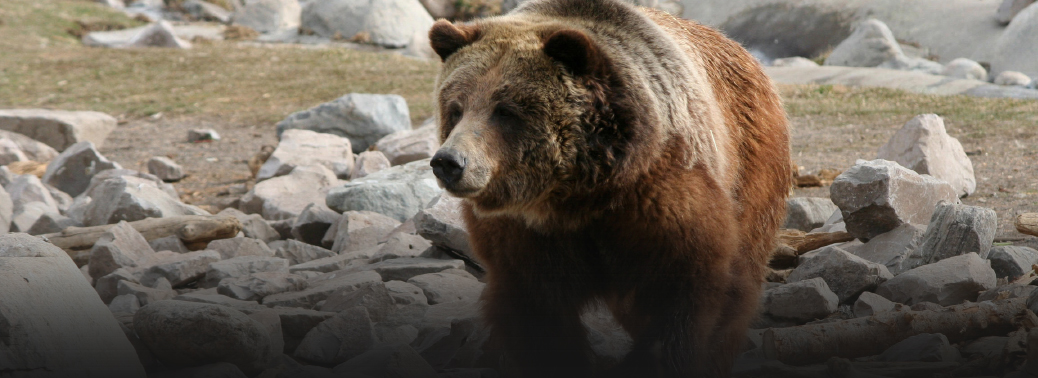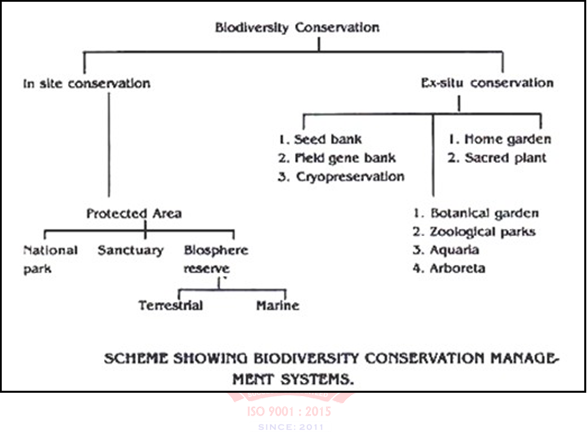STUDYING ANIMAL SOUNDS FOR CONSERVATION
27, Mar 2019

Prelims level : E & BD – Conservation
Mains level : GS III - Conservation, environmental pollution and degradation, environmental impact assessment
- In some forests of central Africa, the Amazon and Borneo, the sounds of chainsaws and gunshots signs of illegal activities such as logging and poaching are picked up and communicated to forest managers by unlikely tools: acoustic devices.
- While bioacoustics (the study of animal sound production, dispersion and reception) is being used worldwide to not only monitor threats to biodiversity but also study animal behaviour and diversity, the field is still in its nascent stages in India.
Biodiversity Conservation
- Biodiversity is the occurrence of different types of ecosystems, different species of organisms with the whole range of their variants and genes adapted to different climates, environments along with their interactions and processes.
- Biodiversity is being depleted by the loss of habitat, fragmentation of habitat, over exploitation of resources, human sponsored ecosystems, climatic changes, pollution invasive exotic spices, diseases, shifting cultivation, poaching of wild life etc.
- The biodiversity conservation methodology is divided as In-situ and Ex-situ.
In-situ methods of conservation of biodiversity

- The in-situ strategy emphasizes protection of total ecosystems. The in-situ approach includes protection of a group of typical ecosystems through a network of protected areas.
a) Protected areas:
- These are areas of land and/or sea especially dedicated to the protection and maintenance of biological diversity, and of natural and associated cultural resources. These are managed through legal or other effective means. Examples of protected areas are National Parks, and Wildlife Sanctuaries.
- Some of the main benefits of protected areas are: (1) maintaining viable populations of all native species and subspecies; (2) maintaining the number and distribution of communities and habitats, and conserving the genetic diversity of all the present species; (3) preventing human-caused introductions of alien species; and (4) making it possible for species/habitats to shift in response to environmental changes.
b) Biosphere reserves:
- Biosphere reserves are internationally recognized, nominated by national governments and remain under sovereign jurisdiction of the states where they are located.
- Biosphere reserves are organized into 3 interrelated zones:
- Core Areas: These areas are securely protected sites for conserving biological diversity, monitoring minimally disturbed ecosystems, and undertaking non-destructive research and other low-impact uses (such as education).
- Buffer Zones: These areas must be clearly identified, and usually surround or adjoin the Core Areas. Buffer Zones may be used for cooperative activities compatible with sound ecological practices, including environmental education, recreation, ecotourism and applied and basic research.
- Transition, or Cooperation, Zones: These areas may contain towns, farms, fisheries, and other human activities and are the areas where local communities, management agencies, scientists, non-governmental organizations, cultural groups, economic interests, and other stakeholders work together to manage and sustainably develop the area’s resources.
- Each biosphere reserve is intended to contribute to the conservation of landscapes, ecosystems, species and genetic variation; to foster economic and human development which is socio culturally and ecologically sustainable; to provide support for research, monitoring, education and information exchange related to local, national and global issues of conservation and development.
c) National parks:
- A national park is a reserve of natural or semi-natural land, declared or owned by a government, which is restricted from most development and is set aside for human recreation and environmental protection. Visitors are allowed to enter, under special conditions, for inspirational, educative, cultural, and recreative purposes.
d) Wildlife sanctuaries:
- An area, usually in natural condition, which is reserved (set aside) by a governmental or private agency for the protection of particular species of animals during part or all of the year. An area designated for the protection of wild animals, within which hunting and fishing is either prohibited or strictly controlled. It is maintained by the state government.
- A traditional strategy for the protection of biodiversity has been in practice in India and some other Asian countries in the form of sacred forests. These are forest patches of varying dimensions protected by tribal communities due to religious sanctity accorded to these forest patches.
- In India sacred forests are located in several parts, e.g. Karnataka, Maharashtra, Kerala, Meghalaya, etc., and are serving as refugia for a number of rare, endangered and endemic taxa. Similarly, several water bodies (e.g. Khecheopalri Lake in Sikkim) have been declared sacred by the people leading to protection of aquatic flora and fauna.
Ex-situ methods of conservation of biodiversity
- Ex-situ conservation is the preservation of components of biological diversity outside their natural habitats. This involves conservation of genetic resources, as well as wild and cultivated or species, and draws on a diverse body of techniques and facilities. Some of these include:
a) Botanic Gardens
- Botanic gardens can be defined as “public gardens which maintain collections of live plants
- mainly for study, scientific research, conservation and education. Botanic gardens are able
- to rehabilitate indigenous and threatened species and restore them to protected portions of their former habitats;
- to exploit commercially those species which are plentiful; and
- to promote wildlife education to a broad range of target groups such as politicians, school and college students, and communities living in and around wildlife
b) Translocations
- Sometimes conservation of faunal species involves or necessitates translocation of animals. This means the movement of individuals from its natural habitat, or from captivity, to another habitat. Translocations are carried out in connection with introductions or reintroductions, and should be handled with extreme caution.
- These operations are carried out often with support from international captive breeding programs and receive the cooperation of zoos, aquaria, etc.
c) Artificial Insemination:
- Artificial insemination, or AI, is the process by which sperm is placed into the reproductive tract of a female for the purpose of impregnating the female by using means other than sexual intercourse or natural insemination.
d) Somatic Cell Cloning
- Somatic Cell Cloning holds some promise for propagating from one or a few survivors of an almost extinct species. The nucleus of a somatic cell is removed and kept, and the host’s egg cell is kept and nucleus removed and discarded. The lone nucleus is then fused with the ‘deprogrammed’ egg cell. After being inserted into the egg, the lone (somatic-cell) nucleus is reprogrammed by the host egg cell. The egg, now containing the somatic cell’s nucleus,is stimulated with a shock and will begin to divide.
e) Seed bank
- The preservation of plant germplasm in seedbanks, (or genebanks), is one of the techniques of ex-situ conservation of plant species. Storing germplasm in seedbanks is both inexpensive and space efficient. It allows preservation of large populations with little genetic erosion. Seedbanks also offer good sources of plant material for biological research, and avoid disturbance or damage of natural populations.
f) Reintroduction
- Reintroduction of an animal or plant into the habitat from where it has become extinct is another form of ex situ conservation. For example, the Gangetic gharial has been reintroduced in the rivers of Uttar Pradesh, Madhya Pradesh and Rajasthan where it had become extinct.
- Species based programmes for conservation of biodiversity The species-based conservation programmes in India are:
a) Project Tiger
- Tigers are terminal consumers in the ecological food pyramid, and their conservation results in the conservation of all trophic levels in an ecosystem.
- Project Tiger is a Centrally Sponsored Scheme of Government of India which was launched on the 1st of April, 1973 for in-situ conservation of wild tigers in designated tiger reserves.
- The project aims at ensuring a viable population of Bengal tigers in their natural habitats and also to protect them from extinction, and preserving areas of biological importance as a natural heritage forever represented as close as possible the diversity of ecosystems across the tiger’s distribution in the country.}
b) Project Elephant
- Elephant was launched in February, 1992 to assist states having free ranging populations of wild elephants to ensure long-term survival of identified viable populations of elephants in their natural habitats. The project is being implemented in twelve states viz. Andhra Pradesh, Arunachal Pradesh, Assam, Jharkhand, Karnataka, Kerala, Meghalaya, Nagaland, Orissa, Tamil Nadu Uttaranchal and West Bengal.
c) Asiatic Lion Reintroduction Project
- The Asiatic Lion Reintroduction Project is an effort to save the Asiatic lion from extinction in the wild. The last wild population in the Gir Forest region of the Indian state of Gujarat is threatened by epidemics, natural disasters and anthropogenic factors. The project aims to establish a second independent population of Asiatic Lions at the Kuno Wildlife Sanctuary in the Indian state of Madhya Pradesh.
d) Snow Leopard Project
- Snow leopards live in the mountain regions of central Asia. In India their geographical cover encompasses a large part of the Western Himalaya including the states of Himachal Pradesh, J&K and Uttarakhand with a sizable population in Ladakh, Sikkim and Arunachal Pradesh in Eastern Himalaya. They are found at high elevations of 3000-4500 meters (9800 ft to 14800 ft.), and even higher in the Himalayas.
- The Snow Leopard is listed as endangered on the IUCN-World Conservation Union’s Red List of the Threatened Species.
- Keeping this in view, WWF-India initiated the project, “snow leopard conservation: An initiative”, in the states of Uttarakhand (UK) and some of the areas of Himachal Pradesh (HP) to conserve biodiversity with community participation.
Other Initiatives:

Bioacoustics:
- Bioacoustics is a cross-disciplinary science that combines biology and acoustics.
- Usually it refers to the investigation of sound production, dispersion and reception in animals (including humans).
- This involves neurophysiological and anatomical basis of sound production and detection, and relation of acoustic signals to the medium they disperse through.
- The findings provide clues about the evolution of acoustic mechanisms, and from that, the evolution of animals that employ them.
- In underwater acoustics and fisheries acoustics the term is also used to mean the effect of plants and animals on sound propagated underwater, usually in reference to the use of sonar technology for biomass estimation. The study of substrate-borne vibrations used by animals is considered by some a distinct field called biotremology.






